
Eve Online | Cosmos Amarr Material Farming
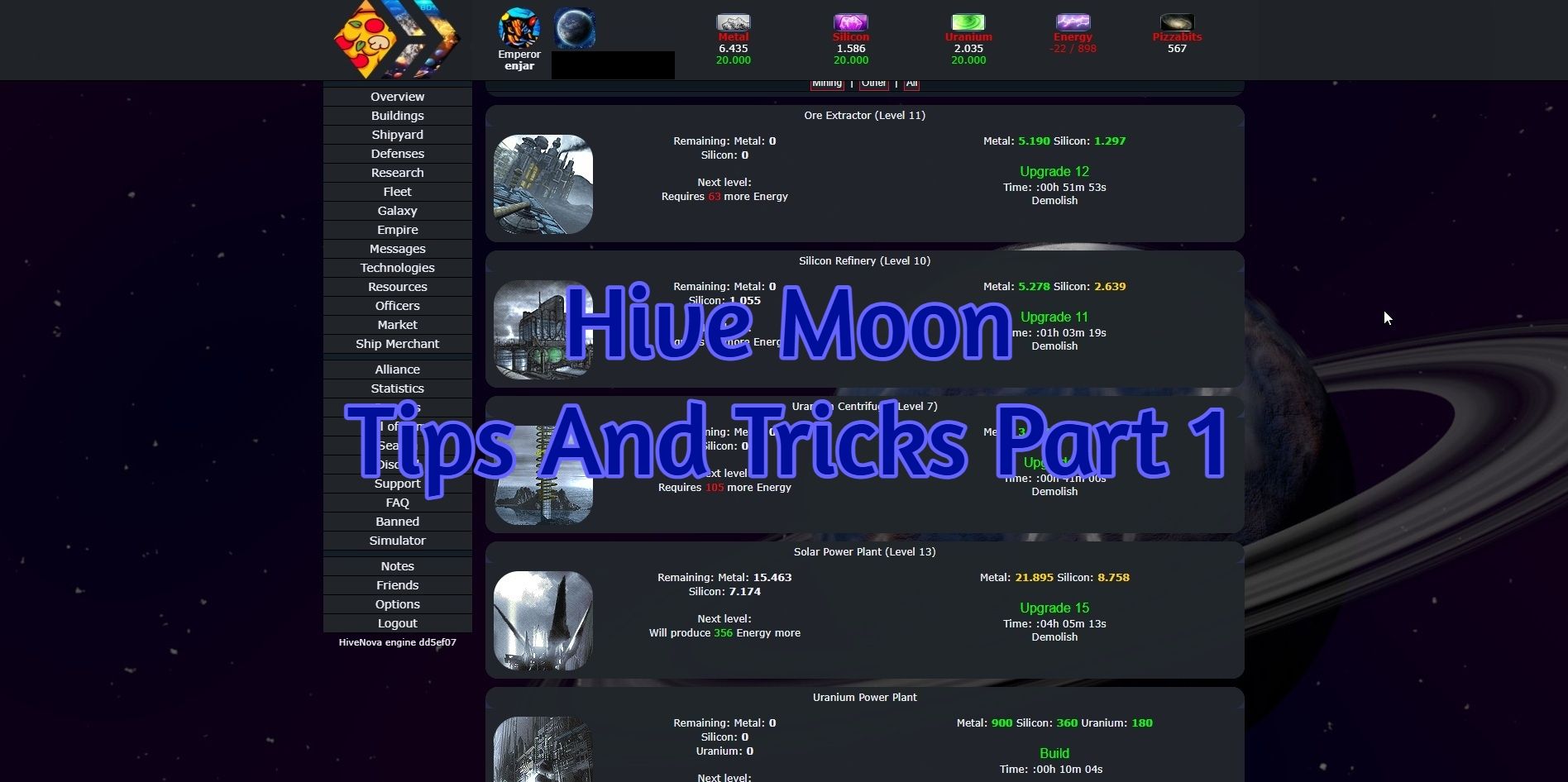
With Moon being out for a couple of weeks now on Hive. I thought I'd share a couple of helpful things. These will hopefully help make the game more fun and possibly less confusing for some.
By now players who started around when the game launched should have Expedition Research 1 done. If you don’t yet or have no clue what that even is. I already have a guide on that going over The Importance Of A Planet’s Position.
For those that have no clue what Moon on Hive is, let alone, how to sign up and start playing today. I have a guide on that as well. The game recently hit over 300 players and the more people there are the bigger than fun this thing can become.
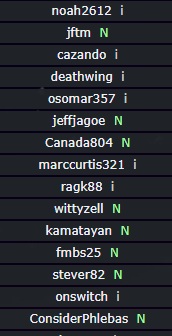
You might have noticed some players have a letter next to their name like (s), (n), (i or I), (v), and (*)
A general rule of thumb is you can attack someone who is 20% of your total points up to 500% and vice versa. Players who are too low for you to attack are listed as (n) and players who are too powerful for you to attack are shown as (s).
If a player has a (v) next to their name, they are in vacation mode. This setting can be found under options. While a player is in vacation mode no further attacks can be made against them. They also do not gain any resources. Great when you need to take a week off from the game or so.
Then you have the (i) and (I). These are inactive accounts. Inactive accounts are open to be attacked by anyone regardless of points.
Finally, you have () that indicates some kind of activity has occurred. For instance, you might notice a (i) also has a (). That is a good sign someone has sent a prob to check what resources they have, or they have been attacked recently.
Knowing what these symbols mean can help you further understand what is going on in the game. Smart players learn how to benefit greatly from what seems like minor details of the information being displayed.
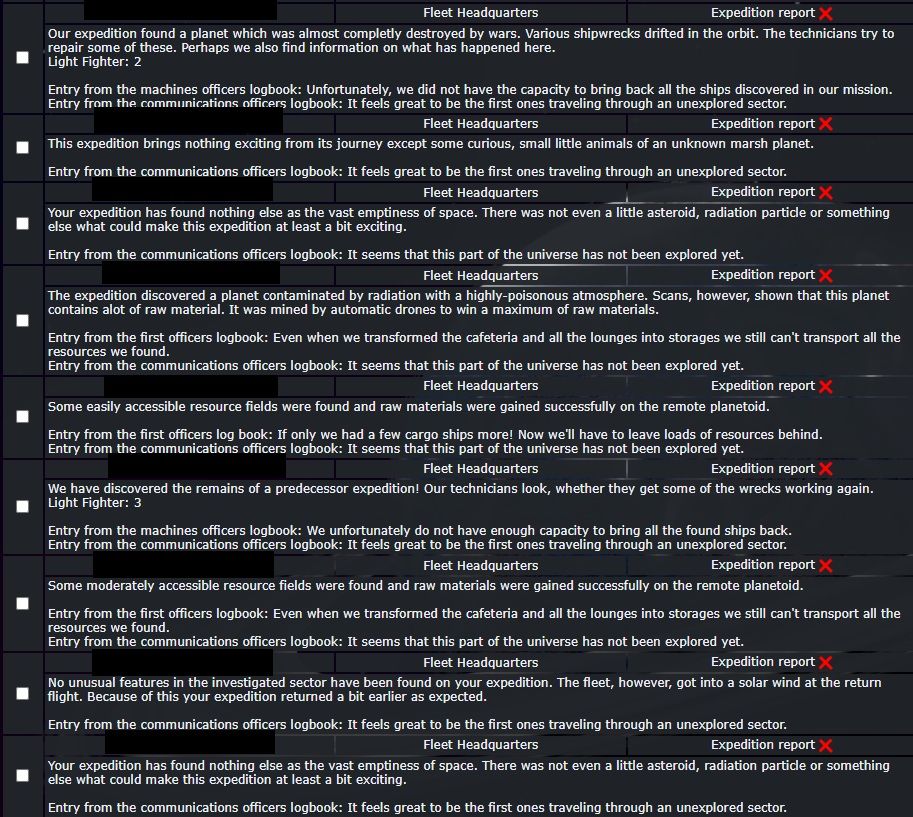
For players not in the know once you have Expedition Research 1 done you can start farming the daylights out of these. Expeditions are random outcome activities. You don’t know if you will find Pizzabits, Uranium, or death. Along with a few other things in between.
The biggest catch is you only get 1 type of reward if anything at all. Sometimes I'll get nothing out of most of my exploration trips. On other days I'll have one expedition bring back Uranium, another ship, and even a further one some Silicon.

To be able to start one of these you go into your galaxy system view. Then click on position 14 which says Deep Galaxy. After you set up a fleet you will see there is an option to run as an expedition.
While I could make an entire post on what little I know about these things. I’m keeping it rather simple here on purpose. Since you should already have the skill anyways from picking up another planet. These can be fun to check out as well.
These are also a huge reason certain players are mass-producing a certain type of ship to run them. Perhaps in the future, I'll create a more detailed post about them. For now, they might be something most do not utilize and you will have to learn a decent amount for yourself to see the real value in them.
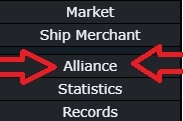
Do you and some of the alliances you are in live around the same area of the universe in this game? Tired of all raiding the same inactive player within moments of each other. Often getting scraps of what you were hoping to collect? Well, I have some good news for you.
If you click on the alliance page, it displays all active combat missions. Not only targets your alliance members are going after. It also displays if someone is attacking them as well.
So, if you notice someone else already in your alliance is hitting a target a joint effort is not needed to take that target down. Move on to the next. Unless you are happy getting whatever resources are left behind by someone else getting there before you do.
This is also a great way to see who else might be semi-active and lurking in the Alliance Discord channel. Sometimes you need to fleet up on a target and this can be a way of finding out who might be around.
This can also be used to alert an alliance member that they are under attack and should take some kind of action in either preparing to take on that attack or migrating their losses. Alliance that work together are the ones who end up surviving the longest and growing.
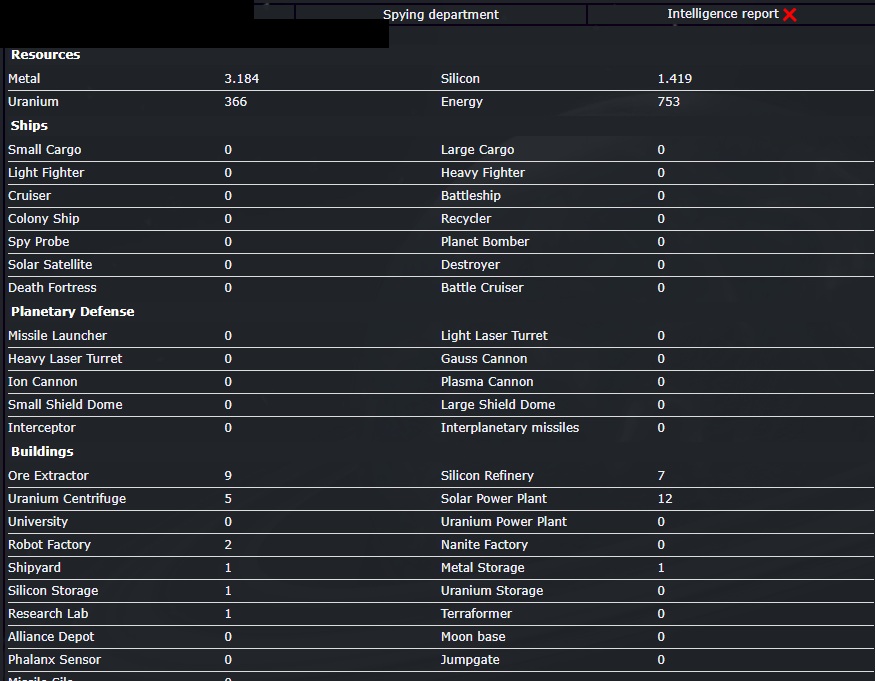
While it’s true if you meet certain thresholds of the research which can be found by clicking on it. That you could get more details. There is a lot more going on with this research than you might know about.
Due to that, this makes this research skill something people often overlook. As they think “Oh, I'm not getting it to level 8 anytime soon.” Along with the thought that they already have spy probes unlocked so why bother leveling it up any further?
Not only can information the player gets become limited if you are high enough over their skill. There is even a chance they get zero information, and the spy probe blows up instead.
This all comes down to if one player has higher-level research over the other player and how many probes are sent. Yes, sadly there is a counter to someone having a higher level. This is why higher-level players send a few spy probes at a time to do the spying.
You even get a little % report at the bottom of each time you use a spy probe in the report that gets sent back to you. Letting you know the chances that it got discovered.

I know it’s going to sound a bit nerdy and that is became it is. Keeping track of data on players around your area of space can help make life a bit easier. From knowing where the inactive players are to those that are super aggressive. Information is power in this game.
You don’t need anything crazy detailed. I find it useful to know where the inactive are if someone is leveling up fast, and if there seems to be a bit of a war going on in my part of the universe.
This mostly comes in handy if say you only have five minutes to get some stuff done in the game. You can quickly look over a list and realize that you have not checked in on some planet in a day or so. Perhaps it’s a possible raid target and perhaps not.
I like to separate those that are inactive. It also helps to discover if an inactive has become active again. It can also save you a little uranium in the long run if you are not constantly just checking out what is in your area as you should already know.
In the long run, such data might help you to decide which players to avoid interacting with at all. Nothing worse than thinking you just found some juice fat target. Then only realized they had a massive fleet on standby, and you just fell into a trap they set.
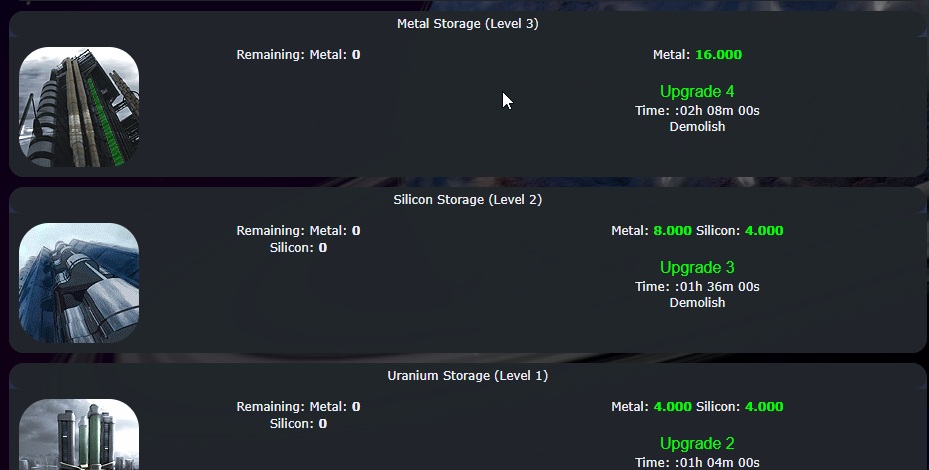
Nothing worse than logging in after being away for a few hours or perhaps longer just to see you have been sitting on max resources that entire time. This can be even easier to do when you have multiple planets that you often don’t interact with.
My advice unless you are quite active is to upgrade storage a little sooner than you think it will be needed. You never know if you end up lucking out in an expedition or if IRL gets in the way. Next thing you know you are losing out on resources by being capped.
Hope a few of these random tips and some tricks help some players advance a little quicker in this game. While this game looks simple on the surface there are a lot of things that might not seem big but can add up over time.
Screenshots were taken and content was written by @Enjar about Hive Moon.
